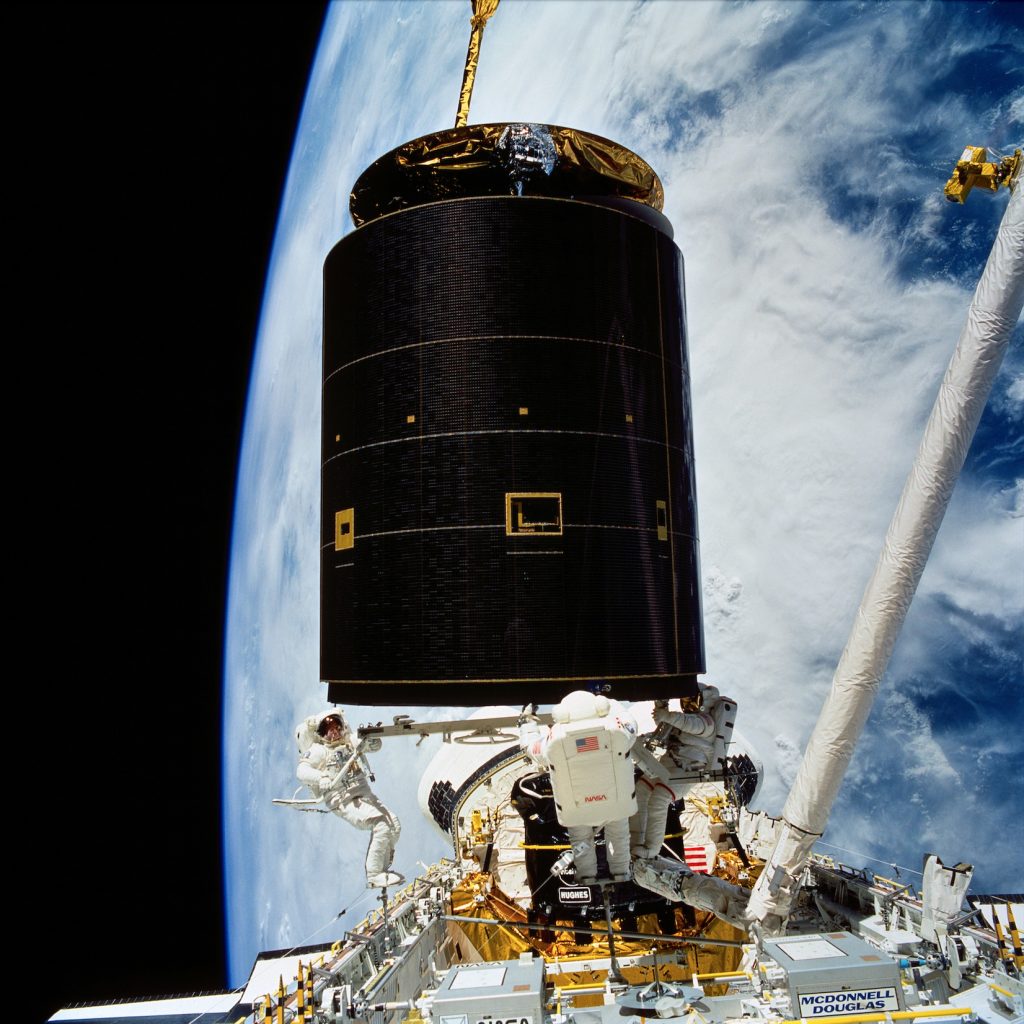Since the mid 1960s, all space walks or extra-vehicular activities (EVAs) have involved just one or two astronauts — except once. In May 1992, on the STS-49 mission, the crew of the space shuttle Endeavour was attempting to rescue a stranded communications satellite, Intelsat 603. After repeated two-person EVAs failed to capture the satellite, NASA and the crew improvised the world’s first (and so far only) 3-person EVA. Anchored in the shuttle’s cargo bay, astronauts Richard Hieb, Thomas Akers, and Pierre Thuot simultaneously grabbed the large spinning Intelsat by hand. The shuttle crew later attached Intelsat 603 to a live rocket motor and released it, enabling the satellite to reach its desired geostationary orbit, where it successfully operated for 23 years.


Thanks, Mark! I enjoy reading your posts as well.